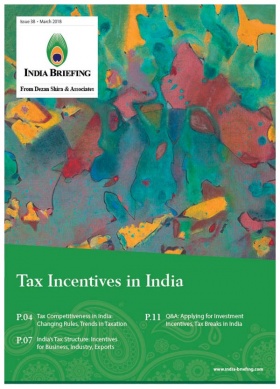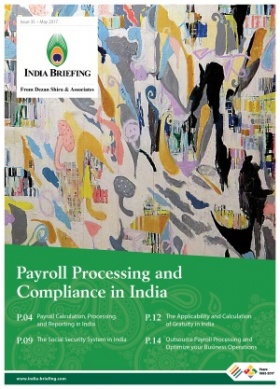Future of Fintech in India – Opportunities and Challenges
India’s financial technology (fintech) sector may be young but is growing rapidly, fueled by a large market base, an innovation-driven startup landscape, and friendly government policies and regulations.
Several startups populate this emerging and dynamic sector, while both traditional banking institutions and non-banking financial companies (NBFCs) are playing catch up.
Earlier this year, the National Association of Software and Services Companies (NASSCOM) reported that around 400 fintech firms operated in India, boosted in large part by foreign investments in fintech-focused startup accelerators and incubators.
NASSCOM predicts that India’s fintech software market alone could touch US$ 2.4 billion by 2020, doubling on the current rate of growth.
Technology and the financial services in the Indian market
Understood simply, fintech refers to the scope of financial services that can be available on digital platforms. This new disruption in the banking and financial services sector has had a wide-ranging impact. Key service offerings to emerge on digital platforms include:
Peer-to-Peer (P2P) Lending Services: Companies use alternative credit models and data sources to provide consumers and businesses with faster and easier access to capital. P2P lending allows online services to directly match lenders with borrowers who may be individuals or businesses. Examples are Lendbox, Faircent, i2iFunding, Shiksha Financial, GyanDhan, and MarketFinance.
Payment Services: Companies allow both private individuals and businesses to accept payments over the web and on mobile without needing merchant accounts. Transfers are made directly to the bank account linked to the payee in order to secure against fraud. Examples are Mobikwik, Paytm, and Oxigen Wallet.
Remittance Services: A few startup ventures, albeit registered abroad, are trying to address the gaps in remittance transactions (both inbound and outbound) as the current process is cumbersome and expensive. These startups aim to disrupt the current monopoly held by firms like Western Union and MoneyGram. Examples are Instarem, FX, and Remitly.
Personal Finance or Retail Investment Services: Fintech companies are also growing around the need to provide customized financial information and services to individuals, that is, how to save, manage, and invest one’s personal finances based on one’s specific needs. Examples are FundsIndia.com, Scripbox, PolicyBazaar, and BankBazaar.
Miscellaneous Software Services: Companies are offering a range of cloud computing and technology solutions, which improve access to financial products and in turn increase efficiency in day to day business operations. The scope of fintech is rapidly diversifying at both macro and micro levels, from providing online accounting software to creating specialized digital platforms connecting buyers and sellers in specific industries. Examples include Catalyst Labs in the agriculture sector, AirtimeUp which provides village retailers the ability to perform mobile top ups, ftcash that enables SMEs to offer payments and promotions to customers through a mobile based platform, Profitbooks (online accounting software designed for non-accountants), StoreKey, and HummingBill.
Equity Funding Services: This includes crowdfunding platforms that enable the funding of a project or business venture by raising funds from a large number of people. Such internet-mediated platforms are gaining popularity across the world as access to venture capital is often difficult to secure. These services are particularly targeted at the early stage of a businesses’ operation. Examples include: Ketto, Wishberry, and Start51.
Cryptocurrency: India being a more conservative market where cash transactions still dominate, usage of digital financial currency such as ‘bitcoin’ has not seen much traction when compared to international markets. There are, however, a few bitcoin exchange startups present in India – Unocoin, Coinsecure, and Zebpay.
Scope for growth in India
Fintech service firms are currently redefining the way companies and consumers conduct transactions on a daily basis.
This is why global investments into fintech ventures have been increasing at record speed – tripling to US$ 12.2 billion in 2014 from US$ 4.05 billion in 2013, and reaching US$ 19.1 billion in 2015.
In India, the scale has been much smaller but at similar growth rates – investment in India’s fintech industry grew 282 percent between 2013 and 2014, and reached US$ 450 million in 2015.
Additionally, India has a large untapped market for financial service technology startups – 40 percent of the population are currently not connected to banks and 87 percent of payments are made in cash.
With mobile phone penetration expected to increase to 85-90 percent in 2020 from 65-75 percent currently, and internet penetration steadily climbing, the growth potential for fintech in India cannot be overstated.
Moreover, by some estimates, as much as 90 percent of small businesses are not linked to formal financial institutions.
These gaps in access to institutions and services offer important scope to develop fintech solutions (such as funding, finance management) and expand the market base.
Disruptive potential in the finance and banking sector
Fintech firms are breaking new ground in the formal finance sector through innovative and dynamic use of technology in the lending process.
For instance, while traditional banks (around 100) and NBFCs (around 1100) in India use technology to simply calculate credit scores, fintech ventures use machine learning algorithms and alternative data points such as social media footprints, call records, shopping histories, and payments to utility service providers to increase efficiency and provide greater access to credit.
The turnaround time is also much faster for the approval and disbursal of loans by fintech firms despite several banks (State Bank of India, ICICI, HDFC, and Axis bank) digitizing and speeding up these processes markedly.
Challenges and opportunities for fintech expansion
While digital finance firms have benefited from the government’s pro-startup policies and flexible regulatory conditions imposed by the Reserve Bank of India (RBI), formal institutions possess an established infrastructure and legacy that is not easily replaceable.
Fintech startups need to instill greater confidence among Indian customers, already known for being conservative in their financial preferences.
Figuring out how to market to their needs and influence financial behavior are some of the biggest challenges, as is setting up a strong and responsive regulatory infrastructure to keep apace with the speed of technological innovation.
On the other hand, traditional banking and financial institutions can leverage their existing customer base and adopt digital products that nurture strong financial relationships while improving service efficiency and broadening access to meet changing needs.
The disruptive potential of fintech firms can provoke the much needed modernization of the traditional sector, reducing costs in the process and increasing the size of the banking population.
Responding to these opportunities and challenges, banks like HDFC and Axis have launched mobile phone applications to ease digital transactions; Federal Bank announced a partnership with Startup Village to develop innovative banking products; U.K. giant Barclays is set to operationalize its fifth global fintech innovation center that will be located in India; and Goldman Sachs Principal Strategic Investments Group (GSPSI) is looking to invest in Bengaluru’s fintech startup scene.
Thus, the growth prospects in technological innovation may not necessarily produce a mutually exclusive relationship between traditional institutions and fintech firms in India.
Right combination of incentives, policies, and regulation
Initiatives by the RBI and parallel government efforts have focused on fostering financial inclusion.
This has meant encouraging competition and innovation in India’s nascent fintech sector on a more or less even playing field.
This has allowed both online and offline solutions to emerge and has created a safer financial system with far-reaching access.
Reserve Bank of India: The RBI has so far promoted the Unified Payments Interface and the Bharat Bill Payments System, as well as digital payments, P2P lending, and the use of automated algorithms to offer financial advice. Moreover, the RBI has granted licenses to 11 fintech entities to establish payment banks that provide savings, deposit, and remittance services.
Government Schemes: Government-led initiatives such as Jan Dhan Yojana, Digital India program, and National Payments Council of India (NPCI) have provided important enabling platforms for technology innovators. The removal of surcharges on electronic transactions, tax benefits for consumers and businesses using e-payments, and changes in authentication requirements are other examples of the government’s efforts to encourage the growth of a fintech ecosystem in India.
Fintech Startup Sector: This is probably the greatest empowering incentive towards the expansion of fintech ventures in India. An encouraging regulatory environment has enabled the launching of more than 125 fintech startups in 2018 alone. As mentioned earlier, several national and international banks and investment groups are also investing in India’s fintech startups and funding fintech solutions.
Observations
The digital and technological revolution transformed business operations across all industries, and the financial and banking sector is no exception.
What is heartening is that the Indian government and regulatory institutions have in effect promoted an entrepreneurial rather than obstructive climate for fintech in India.
However, policies and governance will need to match the speed of innovation in this sector, particularly to ensure secure and transparent growth.
Editor’s Note: This article was first published on July 15, 2016 and is updated on November 27, 2018 to accommodate latest regulations.
About Us
India Briefing is produced by Dezan Shira & Associates. The firm assists foreign investors throughout Asia and maintains offices in China, Hong Kong, Indonesia, Singapore, Vietnam, and Russia.
Please contact india@dezshira.com or visit our website at www.dezshira.com.
- Previous Article Manufacturing and Trading in India – New Issue of India Briefing Magazine Out Now
- Next Article Indian Banks Look to Solve Russian Banking Sanctions Imposed by the US

















